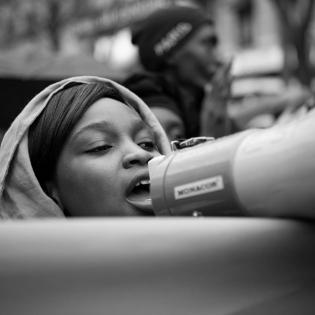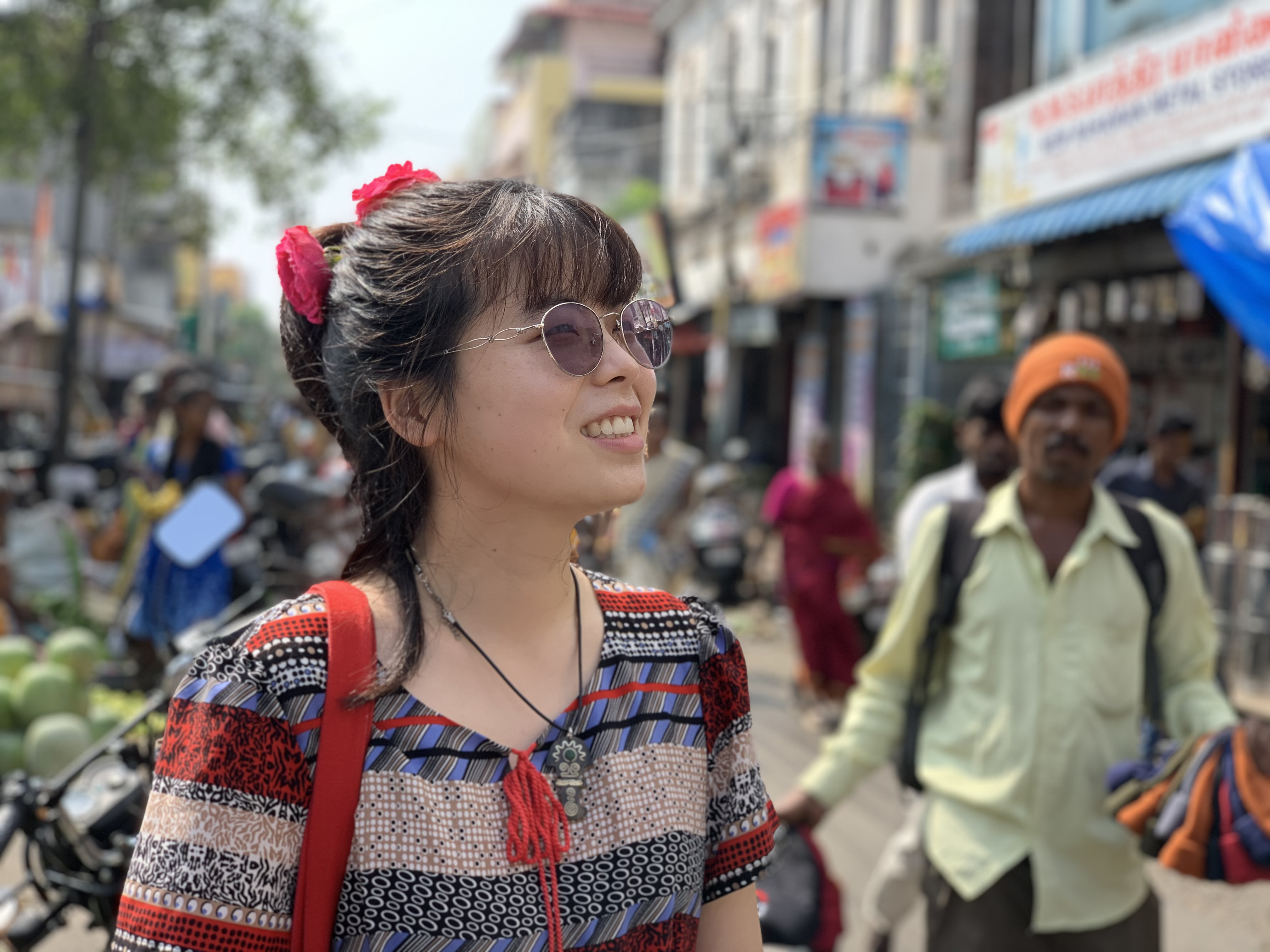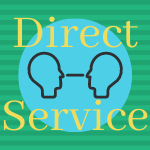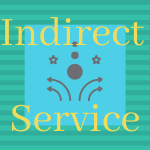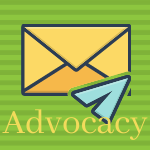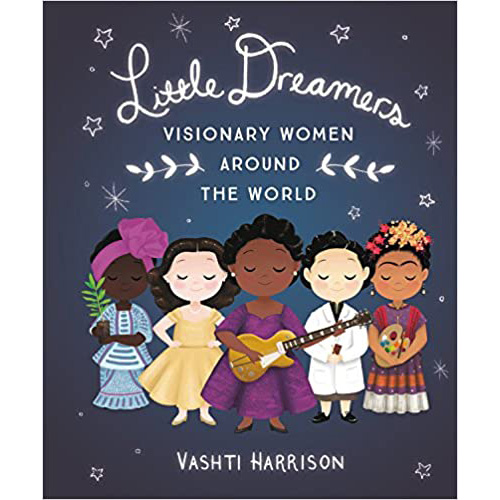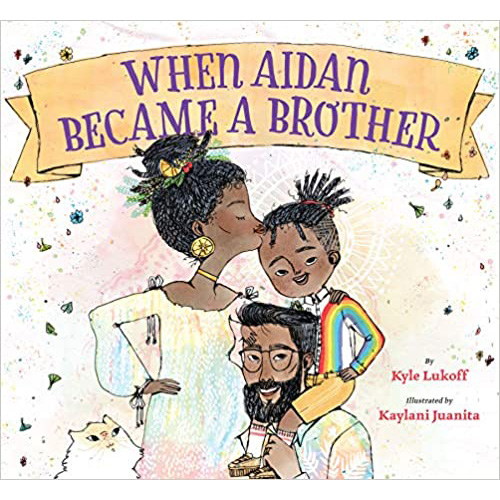Women and Gender in Society
This toolkit guides youth, educators, group leaders, families, and community groups as they investigate the issue of women and gender in society and prepare to take action. Contents:
- Current story
- Definitions
- Key questions
- Background
- Lessons and activities
- Resources in your community
- Project ideas and guide to service-learning
- Quotes
Gender and Sexuality
Especially since the 1960s our world has made efforts to support women and achieve gender equality. Society has also strived to move toward a place that embraces LGTBQ+ rights. Yet, there is tremendous work still to be done to achieve equality for people of any gender and sexuality. Fortunately, youth can be the driving force of these movements due to their passion, heart, and knowledge.
“In life there is no real safety except for self-belief.” – Madonna
Share this example of youth action.
Teen Yara Shahidi uses her public platform to advocate for equality and equity for all. In this specific video, Yara Shahidi makes a moving speech about gender and sexual equality and warns against an “identity blind narrative.” She ends by saying the world belongs to youth. This is a responsibility and challenge to speak your truth.
Definitions and Key Questions
See the handout below for Vocabulary and Key Questions related to women and gender.
Definitions:
As young people build knowledge and passion for women and gender equality, they can look up vocabulary and read more about the issues and needs. Here are some of the relevant vocabulary words.
- Gender Inequality
- Sexuality
- Gender
- Equality
Key Questions for Learning and Service:
These key questions may guide investigation or generate inquiry about other areas of interest. The best service-learning experiences follow the passions of youth and local concerns. Here are some sample questions:
- What can you do or say in reaction to the mistreatment of people because of their gender or sexuality?
- How can you change your everyday language to be more inclusive of gender, roles, and biased expectations?
- Where do you see opportunities for growth related to women and gender equality in your community? In the country? In the world?
- How does your community (or school or workplace) address issues related to women and gender? What resources are available? How do these resources help the community?
Background Information
Share these background resources to inspire and inform youth about women and gender in society.
- Learning to Give white paper The Philanthropic Meaning of the #MeToo movement
- Learning to Give white paper Women and Philanthropy
- Learning to Give white paper National Organization for Women
- Learning to Give white paper on LGBTQ+ Philanthropy
- The Genderbread illustration shows that gender and sexual identity are not either/or categories, but are varied and fluid.
- Medical News Today article on the use of proper gender pronouns
- The Girl Effect is a global media resource that empowers girls to change the world.
- UN video demonstrating the struggles individuals face due to discrimination of sexual orientation and gender.
- Article illustrating the timeline of the women’s history movement
- UNICEF article outlining what gender inequality is
- ABC series When We Rise demonstrates the real-life personal and political struggles, setbacks, and triumphs of diverse LGBT activists who played integral roles in pioneering their leg of the U.S. civil rights movement from its infancy.
Lesson Plans
Learning to Give has hundreds of lesson plans to inspire and inform youth action. Search our lesson plans for topics that fit your interests and age of your kids. Narrow your search with keywords like women, gender, LGBT, suffrage, or names of women activists. Here are some sample lesson plans:
- Sojourner Truth - discuss the right of all voices to be heard in a democracy and determine how Sojourner Truth's work on behalf of various causes was philanthropic.
- Elizabeth Cady Stanton - put her work in the context of the time and compare her strategy and impact to other movements.
- Madam C.J. Walker - become aware of the many ways people give and take philanthropic action.
- U.N.'s Millennium Goals - identify the reasons for gender inequality in schools and explore what policies and measures are in place for achieving universal primary education for kids all over the world.
Community Resources
For meaningful service-learning projects with long-lasting impact, connect youth to people and nonprofit organizations in the local community related to women and gender rights. This is an opportunity for a field trip (may be virtual) or for an expert to teach about issues and what is already being done. Youth may write, call, or interview experts about needs and partnerships.
- Ask youth if they have family members whose work is related to gender and/or sexuality.
- National Women’s Law Center
- National Organization for Women
- #Happy Period
- Local Pride Center
- PFLAG
- Planned Parenthood
- GLSEN
- Trevor Helpline / Trevor Project 1-866-488-7386.
- National Center for Transgender Equality
- Counseling Center
- Nonprofit organizations that focus on these issues
Project Ideas
There are four types of service. The ideas below are grouped by these types. The best service-learning experiences follow the passions of youth and local concerns. These are provided to start conversations and ideas.

This overview Guide for Planning Service-Learning describes each step of the process and actions to take.
This blank chart for Planning Service-Learning helps youth prepare for who does what for maximum service and learning impact
- Host or attend a women's or pride march!
- Coordinate with the school administration to host an equity forum or discussion.
- Volunteer at a nonprofit organization that serves the needs of women and/or the LGTBQ+ community
- Create PSA videos about equality and acceptance. Show them at school or on local tv stations.
- Create posters with slogans that communicate positive messages about supporting those who identify as LGTBQ+
- Start a social media campaign to educate others on women and gender inequality
- Start or join a gender or sexuality equity club such as GSA or diversity alliance.
Encourage people to define beauty as the things that make us unique, resilient, powerful, and thoughtful of others. Service Sparks: Beauty Campaign
- Start an anti-bullying campaign! Participants can research best practices for combating bullying and create a campaign designed to impact youth and community members. They could do programs for other classes, create anti-bullying materials, design PSA videos or brochures, and even write to local and state legislators to try and get them to strengthen laws against cyberbullying and bullying in general.
- Hold a community information night to inform community members what they can do to make the community more inclusive
- Research ways to incorporate more inclusivity into your community
- Research the history of women and LGTBQ+ rights
- Research laws pertaining to women and LGTBQ+ rights and health
Literature Guides
Little Dreamers: Visionary Women Around the World literature guide provides before, during, and after-reading discussion questions. The women featured in this book were once little girls with dreams. They wanted to make an impact in the world and they pursued their dream. The women highlighted “made the world a better place to live.”
When Aidan Became a Brother literature guide provides before, during, and after-reading discussion questions. Aidan knows what it feels like to not quite belong. When he can fully express his true self, he helps his parents give his new baby sibling a wonderful welcome. This is a story about protecting and cherishing the uniqueness of each child. It is also the story of a child who was thought to be a girl at birth but was really a boy. His family is loving and supportive of the journey in a way that shows us all how to love and cherish each other's journeys, especially the potentially unfamiliar journey of child who is transgender.
Quotes
Ways to use quotes with youth: Use it to spark conversation. Write about its meaning or do research on the person or topic. Represent the quote visually and display in social media. Tell whether you agree or disagree with the quote. Rewrite it to speak for you.
“Feminism isn't about making women stronger. Women are already strong, it's about changing the way the world perceives that strength.” ― G.D. Anderson
“A feminist is anyone who recognizes the equality and full humanity of women and men.” ― Gloria Steinem
“We have become not a melting pot but a beautiful mosaic. Different people, different beliefs, different yearnings, different hopes, different dreams.” ― Jimmy Carter
“Inclusion is not a matter of political correctness. It is the key to growth.” ― Jesse Jackson
“All human beings deserve equal treatment, no matter their gender identity or sexuality.” ― Andreja Pejic
“I raise my voice not so I can shout, but so that those without a voice can be heard. We cannot succeed when half of us are held back.” ― Malala Yousafzai
